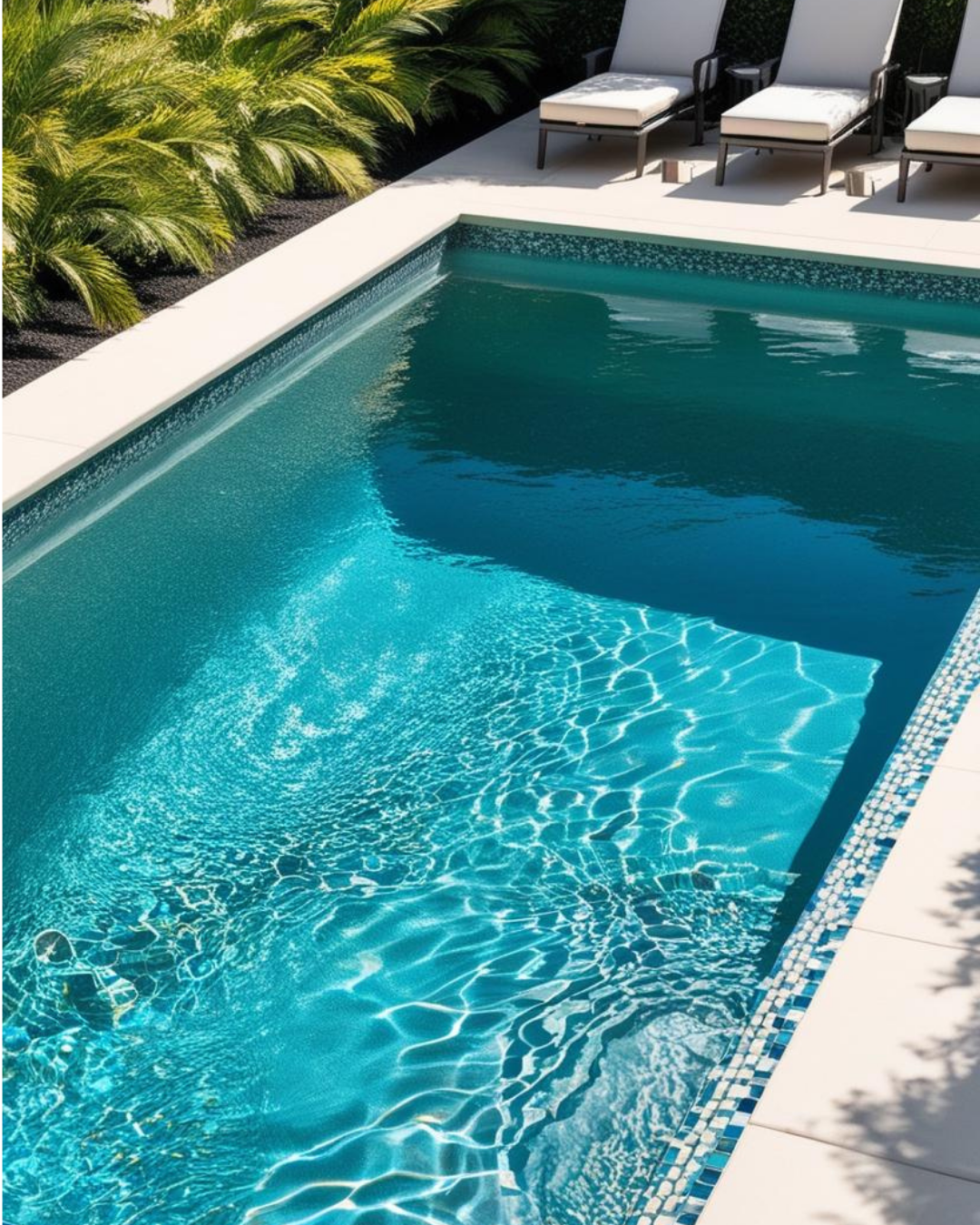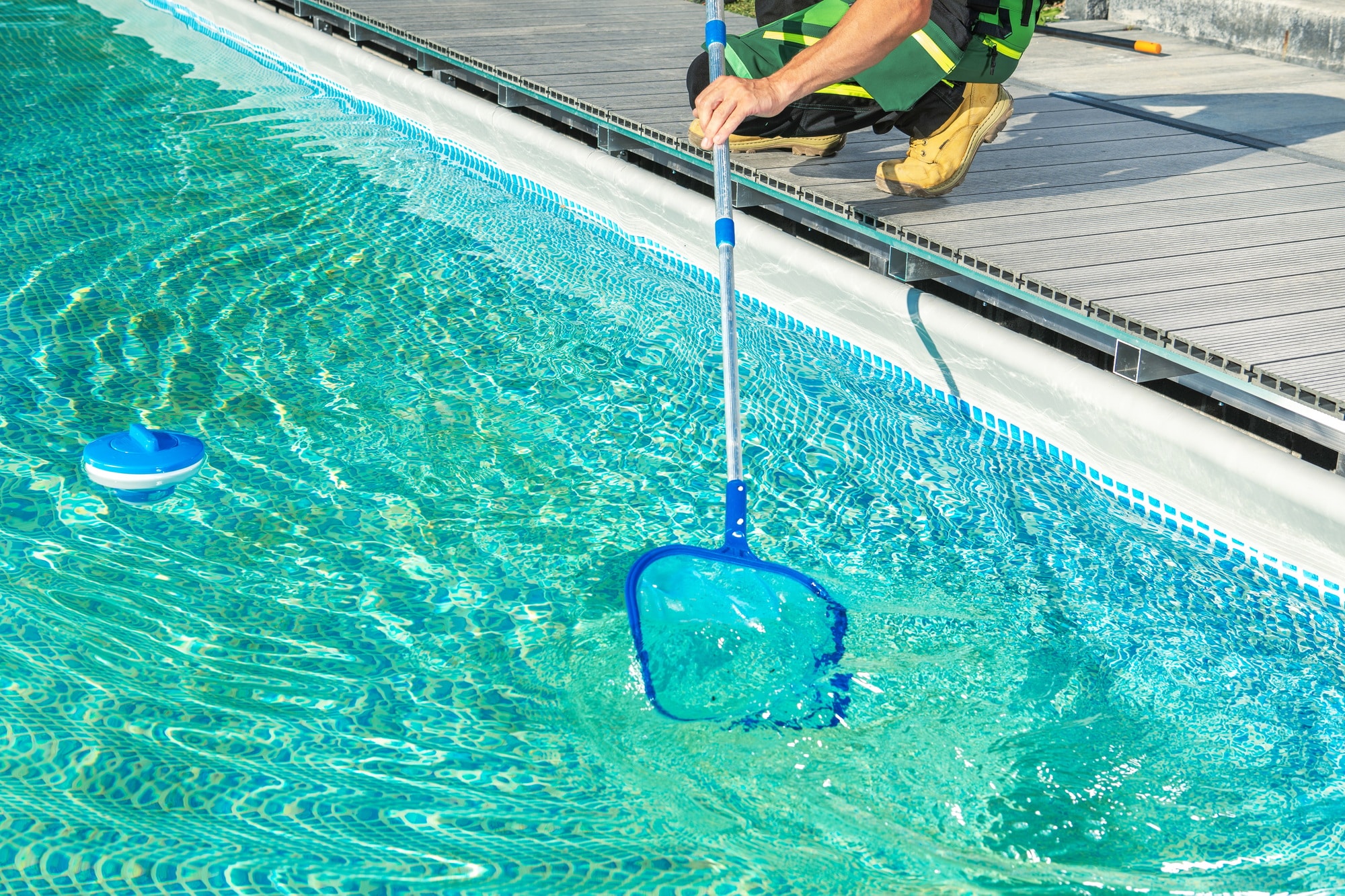At Firefighter Pools, we believe that a job worth doing is a job worth doing right. Founded by trained firefighters, our company is built on the same values of trust, reliability, and excellence that define the fire service.
Our Location
Social Media
How to Clean Your Pool Salt Cell Without Damaging It
August 7, 2025

Is Your Salt Cell on Strike? Here’s What You Need to Know.
Your saltwater pool promises soft, silky water with less chlorine hassle—until the salt cell clogs up and your pool turns cloudy, green, or both. If your chlorine levels keep dropping or your pool system throws a salt cell warning, it’s time for a clean—but one wrong move could shorten your cell’s lifespan or damage your pool equipment.
In this guide, we’ll walk you through the safest, most effective way to clean your salt cell—step by step—without harming it. Backed by recommendations from the CDC’s Model Aquatic Health Code, this method protects your equipment while restoring water quality fast.
Let’s make sure your pool stays crystal clear—and your salt system stays st
Why Cleaning Your Salt Cell Is Important
Salt cells play a critical role in keeping your saltwater pool clean and safe by generating chlorine from salt. However, like any equipment, they require regular maintenance to function properly.
Here’s why cleaning your salt cell matters:
- Prevents Chlorine Production Failure
- Calcium and mineral buildup on the cell’s metal plates can interrupt the electrolysis process.
- When the plates are coated, the cell can no longer effectively convert salt into chlorine.
- Maintains Pool Sanitation
- A dirty salt cell may produce little or no chlorine, leaving your pool vulnerable to algae, bacteria, and other contaminants.
- Improves Energy and Chemical Efficiency
- Clean salt cells require less power to operate and produce a consistent chlorine output.
- Prevents overworking the system, which can lead to higher energy costs and chemical imbalances.
- Extends Lifespan of Equipment
- Regular cleaning helps prevent corrosion and scale buildup that can damage internal components.
- Protects your investment by keeping your chlorinator running smoothly for years.
- Reduces Risk of Costly Repairs or Replacement
- Neglecting maintenance may lead to permanent damage that requires replacing the entire salt cell—an expensive fix.
What Happens If I Don’t Clean My Salt Cell?
Neglecting regular maintenance can lead to:
- Reduced chlorine output, causing cloudy or green water
- False low-salt or “Check Cell” warnings
- Premature salt cell failure, which can cost hundreds to replace
- Strain on your pool system, especially the pump and filter
According to the Model Aquatic Health Code (MAHC), proper disinfection depends on consistent chlorine generation. A dirty salt cell undermines that balance.
What Does a Dirty Salt Cell Look Like?
You’ll usually notice:
- White or light brown crusty buildup (calcium scale) on the metal plates
- A slimy coating or discoloration inside the cell housing
- Error codes or low chlorine readings even after salt adjustment
Why Is My Salt Chlorinator Not Working After Cleaning?
If your salt chlorinator isn’t functioning properly even after you’ve cleaned it, don’t panic—several factors could be at play. Here are the most common reasons:
- Electrode Plate Damage
- Over-scrubbing the plates or using too strong of an acid solution can degrade the metal surface.
- Damaged plates may stop producing chlorine efficiently or at all.
- Signs include low chlorine output or error messages on the control panel.
- Faulty Flow Sensor or Cell Cable
- If the flow sensor is blocked, misaligned, or defective, the system may shut down as a safety precaution.
- Worn or corroded cell cables can interrupt the electrical current needed for electrolysis.
- Check the cables for fraying, corrosion, or loose connections.
- Incorrect Water Flow
- The chlorinator needs proper water flow to operate.
- If your pump or filter is clogged or off, the chlorinator may give a “no flow” or “check cell” error.
- Never run the salt system when the water isn’t flowing—it could damage the unit.
- Software or Control Panel Glitches
- Some models require a reset after cleaning or maintenance.
- If the system isn’t responding, consult the manual for instructions on performing a soft reset or restoring factory settings.
- Residual Debris or Air Pockets
- If the cell wasn’t rinsed thoroughly after acid cleaning, residue might remain.
- Air bubbles trapped inside can prevent effective chlorine generation.
Always check your manual for post-cleaning troubleshooting steps, and never run the system without water flow.
When and How Often to Clean a Salt Cell
Salt cells don’t need constant cleaning, but ignoring the right timing can cause long-term problems.
When Does a Pool Cell Need to Be Cleaned?
- How often?
- Every 3 to 6 months depending on usage, hardness of water, and chlorine output.
- Signs it’s time to clean:
- Reduced chlorine output.
- Cell alert or error messages on your pool system.
- White, chalky scale on the plates.
- How to tell if your salt chlorinator is bad:
- The cell isn’t generating chlorine even after cleaning.
- Power light or flow sensor errors persist.
- Water chemistry remains off despite proper settings.
- How to detect clogging:
- Restricted water flow.
- Rising pressure levels.
- Debris visibly trapped inside the cell housing.
How to Tell If Salt Chlorinator Is Bad?
Warning signs include:
- No chlorine production even after cleaning
- Burn marks or corrosion on the electrode plates\
- A constantly tripping breaker or error codes that don’t reset
If cleaning doesn’t solve the issue, it may be time for a replacement.
How to Tell If a Chlorinator Is Clogging?
Clogging often mimics cell failure, but you might notice:
- Slower water flow or restricted return jets
- Noisy pump operation due to increased pressure
- White flakes floating in the pool (calcium scale breaking off)
Use a visual inspection to confirm buildup, then clean the cell before further diagnostics.
Muriatic Acid vs. Vinegar: What’s the Safest Option?
Muriatic acid is faster and more effective at removing stubborn calcium scales. However, it is highly corrosive and must be diluted properly (usually 1 part acid to 4 parts water).
White vinegar is a gentler, non-toxic option. It takes longer to work—often needing a few hours of soaking—but it reduces the risk of damaging the plates.
CDC Tip: Always add acid to water, never the other way around. And never mix different cleaning agents.
Can I Use Vinegar to Clean a Salt Cell?
Yes, white vinegar is safe for light to moderate scaling. It’s ideal for routine maintenance or environmentally sensitive pool areas. Just soak the cell for several hours, rinse thoroughly, and inspect for any remaining buildup.
Is Muriatic Acid Advisable for Cleaning?
Yes, but with caution. Only use it:
- When scale is heavy or hardened
- With proper PPE (gloves, goggles, outdoor ventilation)
- Following manufacturer dilution ratios
After soaking for 10–15 minutes, rinse thoroughly and let the cell dry before reinstalling. Overexposure or improper handling can corrode the plates and void warranties.
What You’ll Need to Clean a Salt Cell Safely
To clean without causing damage, prepare:
- Protective gloves and goggles
- A clean plastic container or salt cell cleaning stand
- Fresh water and garden hose
- A 4:1 solution of water to muriatic acid
- Optional: white vinegar (for light scale)
Muriatic acid vs. vinegar: What’s the safest option?
- Vinegar: Mild, safer, but slower. Ideal for soft water areas.
- Muriatic acid: Strong and fast-acting. Effective for a stubborn scale, but must be handled with care.
Can I use vinegar to clean a salt cell?
Yes, especially for:
- Light mineral buildup
- Weekly maintenance
- Homes with soft water
Soak in undiluted white vinegar for several hours and rinse thoroughly.
Is muriatic acid advisable for cleaning?
Yes, when used correctly:
- Always dilute acid in water, not the other way around
- Use protective gear and work in a ventilated area
- Never soak longer than recommended
The Right Way to Use Muriatic Acid (Without Damaging the Cell)
What is the ratio of muriatic acid to water for cleaning salt cells?
- Recommended ratio: 1 part muriatic acid to 4 parts water
- Always add acid to water, not water to acid
How long does it take to soak a salt cell in muriatic acid?
- 10–15 minutes maximum
- Longer soaks can erode the titanium plates
Can you leave a salt cell in muriatic acid for too long?
Yes. Soaking too long can:
- Damage the metal coating on the plates
- Reduce the efficiency of the cell
- Void the manufacturer’s warranty
Step-by-Step Guide to Cleaning Your Salt Cell
How to clean with muriatic acid and water:
- Turn off power to the pool system.
- Remove the salt cell and inspect for debris.
- Rinse the cell with fresh water using a garden hose.
- Mix 4 parts water with 1 part muriatic acid in a clean plastic bucket.
- Submerge the cell vertically into the solution for 10–15 minutes.
- Rinse thoroughly with fresh water.
- Reinstall the cell and restore power.
How to clean stubborn scale off a salt cell:
- Use a soft plastic brush after acid soak (never metal)
- Consider repeating the vinegar soak if buildup remains
- Avoid poking or scraping the plates
How to clean a salt cell with hydrochloric acid in a pool?
- “Hydrochloric acid” is another name for muriatic acid
- Follow the same safety and dilution guidelines
- Never pour acid into the pool water directly to clean the cell
How to Dispose of Muriatic Acid After Cleaning
How do you neutralize muriatic acid for disposal?
- Add baking soda (sodium bicarbonate) gradually to the solution until bubbling stops
- Use pH strips to test for a neutral pH (7.0–7.5)
How much baking soda to neutralize hydrochloric acid?
- Roughly 1/2 cup of baking soda per cup of acid
- Always add slowly and stir between additions
Can you put muriatic acid in a plastic container?
Yes, but only in:
- Acid-resistant plastic (HDPE or polypropylene)
- Clearly labeled, sealed containers
- Store away from children, pets, and heat
How to Prevent Damage and Extend Salt Cell Life
What is the best way to maintain a salt cell?
- Clean regularly (every 3–6 months)
- Keep water chemistry balanced:
- Calcium hardness: 200–400 ppm
- pH: 7.4–7.6
- Salt level: as per manufacturer
- Use a sacrificial anode to reduce corrosion
- Inspect for cracks or wear
What is the set point for a chlorinator?
- Typically 3–5 ppm of free chlorine output
- Adjust seasonally based on temperature, bather load, and pool size
- Refer to your specific system’s manual for ideal settings
How to remove a stuck salt cell?
- Turn off power and depressurize the system
- Use a non-metallic strap wrench
- Apply gentle rocking pressure—not force
- Check for buildup or worn O-rings that may be causing the jam
Keep Your Salt Cell—and Your Pool—Crystal Clear
A clean salt cell is essential for efficient chlorine generation and a safe, balanced swimming environment. Don’t wait until you notice cloudy water, flaky calcium, or chlorine level issues. Regular maintenance can save you time, money, and major headaches.
Need expert help with pool maintenance in Dripping Springs, Bee Cave, or Southwest Austin?
Contact Firefighter Pools today for professional salt cell cleaning, system inspection, and full-service pool care—so you can enjoy sparkling clean water without the stress.
Schedule Your Pool Service Now
References:
2023 Model Aquatic Health Code
Our Testimonials
EXCELLENTTrustindex verifies that the original source of the review is Google. Andrew was on time, professional and got the repair done in no time. Highly recommend.Trustindex verifies that the original source of the review is Google. Drew was amazing and very knowledgeable in his craft. He helped us get back to a cleaner pool, a brand new quality pump, and took care of all settings. I appreciate that he showed up on our request on a weekend to fix an issue we noticed with the booster pump. I highly recommend firefighter pools. They will get the job done effectively and efficiently.Trustindex verifies that the original source of the review is Google. Andrew is very knowledgeable and prompt. I would recommend him for any pool services. He keeps our water crystal clear!Trustindex verifies that the original source of the review is Google. Very reliable. Tells you exactly what services they'll do no hidden costs. I highly recommend their services.
Our Achievements
At Firefighter Pools, we bring the same dedication, precision, and reliability from firefighting into pool care. Our expert team specializes in pool cleaning, repairs, equipment installation, and year-round maintenance, ensuring your pool stays in perfect condition.
Service Area

Useful Links
Contact Us
Business Hours
Firefighter Pools
Copyright © 2025 | All rights reserved.





